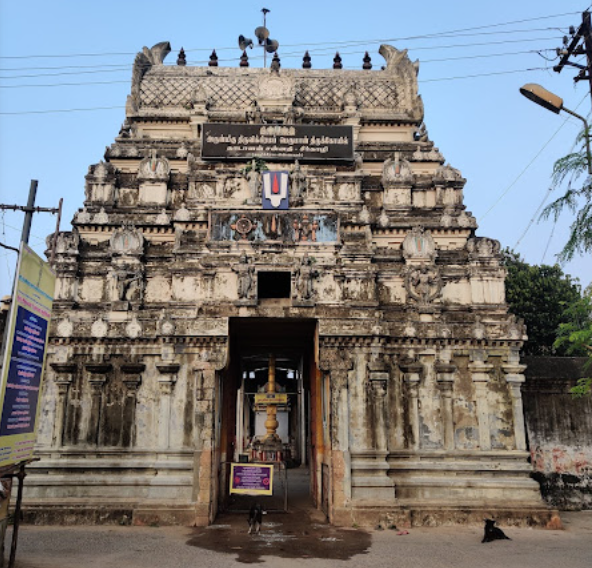Lord Brahma, the creator, became proud of his boon of longevity that spanned many Yugas. To teach him a lesson, Lord Vishnu intervened. Sage Romesa, who was performing penance at this place, sought the darshan of Lord Vishnu in his Vamana-Trivikrama form, where the Lord scaled the entire world with one foot raised. Granting the sage's wish, Lord Vishnu declared that Sage Romesa would live longer than Brahma. Additionally, He decreed that Brahma's lifespan would be reduced by a year each time a hair fell from his body. Realising the lesson imparted by the Lord, Brahma shed his pride. Consequently, Lord Vishnu graced this sacred site with His Trivikrama form.
Sthala Puranam and Temple Information:
The history of this temple is referred to in the Brahmanda Puranam. Sage Romaharshana, known for his hirsute appearance (with "roma" meaning hair), played a key role in this legend. Lord Brahma, proud of his age and longevity, needed a lesson in humility. Sage Romaharshana, desiring to curb Brahma's pride, worshipped Lord Vishnu by hopping on one leg and covering the entire world. Pleased with his devotion, Lord Vishnu granted the sage a boon: for every hair shed from Romaharshana's body, Brahma would lose one year of his life. This instilled fear in Brahma, leading him to control his pride. As a result, it is believed that worshipping at this temple helps devotees reduce their ego.
The Lord of this temple is also known as Thalalan (or Thadalan, with "thal" meaning foot and "aal" meaning ruling). According to one legend, when the temple was not being properly maintained, an old lady placed the idol of Thalalan in a pot of husk. During a song debate with the Saivite saint Sambandar, Tirumangaiazhvar, needing a deity by his side, sang a song on the Dasavatharam. In response, the Lord emerged from the pot and sat next to Azhvar. Tirumangaiazhvar won the debate and sang a pasuram in praise of the Lord.
This temple is one of six places known as Vinnagaram, which refers to Vishnu Nagaram or the eternal space. The other five are:
- Tiruvinnagaram (Oppiliappan Koil)
- Nandipura Vinnagaram (Nathan Koil)
- Arimeya Vinnagaram (Kudamadu Koothan Temple in Nangur)
- Vaikunta Vinnagaram (Vaikunta Nathar Temple in Nangur)
- Parameswara Vinnagaram (Kanchipuram)
The ancient name of this place is Kazhi Seerama Vinnagaram, indicating that it is a Vinnagaram (Vaikuntam) of Rama. According to legend, Lord Rama visited this site, which is connected with Siddhasramam, where Rama and Lakshmana fought the demoness Tataka in the Ramayanam to protect the yagam of Sage Vishwamitra. The temple also features a separate shrine for Kothandaramar. Siddhasramam is also believed to be Vamana’s ashram. Over time, the temple has been known by various names, including Patalika Vanam, Uttama Kshetram, and Chola Simha Puram.
